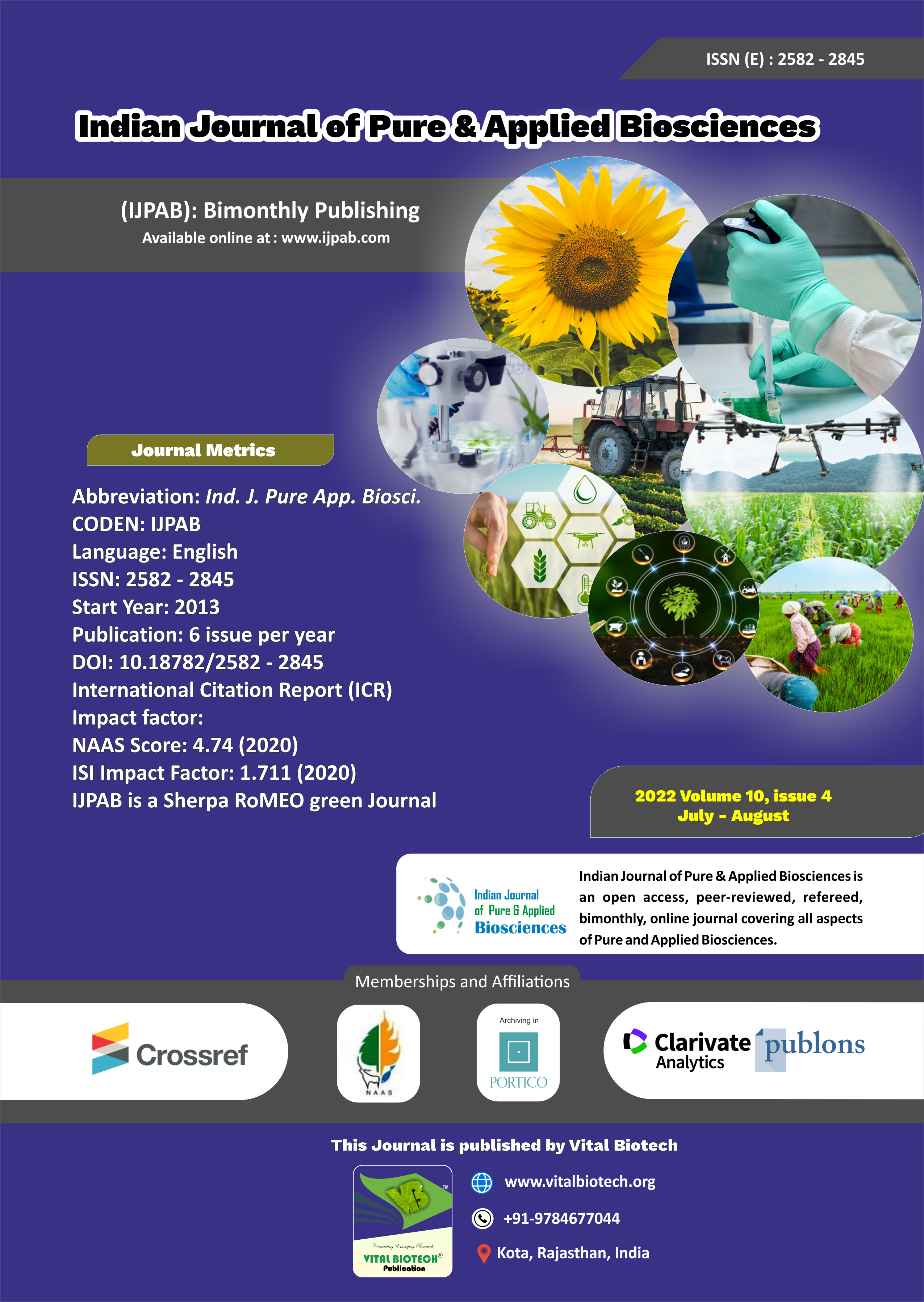-
No. 772, Basant Vihar, Kota
Rajasthan-324009 India
-
Call Us On
+91 9784677044
-
Mail Us @
editor@ijpab.com
Indian Journal of Pure & Applied Biosciences (IJPAB)
Year : 2022, Volume : 10, Issue : 4
First page : (1) Last page : (8)
Article doi: : http://dx.doi.org/10.18782/2582-2845.8934
Incidence and Histopathology of Bacterial Leaf Spot Pathogen Xanthomonas axonopodis pv. vesicatoria (Doidge) Dye in Brinjal Seeds (Solanum melongena L.) Grown in Jaipur Area of Rajasthan
Nandini Sharma1 and Dilip Kumar Sharma2* ![]()
1Botany Research Lab, Agrawal P.G. College, Jaipur, Rajasthan, India
2*Director, Vardhman Mahaveer Open University (VMOU), Kota, Rajasthan-324010, India
*Corresponding Author E-mail: drdilipsharma12@gmail.com
Received: 22.04.2022 | Revised: 26.06.2022 | Accepted: 10.07.2022
ABSTRACT
A survey was conducted to examine seed-borne microorganisms' prevalence in the Jaipur region. On Tween-80 agar medium (semi-selective medium), 110 seed samples of brinjal (Solanum melongena L.) were shown to have a 09-100 per cent incidence of bacterium Xanthomonas axonopodis pv. vesicatoria (Xav). On the basis of discolorations and signs on the seed surface, these obtained seed samples were divided into three categories. Asymptomatic (06.25-97.50 per cent), moderately (shrivelled) discoloured (02.50-83.25 per cent), and highly discoloured (04.25-100 per cent) seeds were found in dry seed inspection. For histopathology examinations, two seed samples naturally infected (lab ac nos. SM001; SM011) with a 100% incidence of Xav were chosen. Necrosis was seen in the embryo and endosperm after manually bisecting severely affected seeds in third category. In non-symptomatic seeds, the pathogen was detected only in the layers of the seed coat (funiculus); however, in moderately discoloured and heavily discoloured seeds, Xav was found in the seed coat and endosperm, including the embryo. The bacterium generated necrosis, lytic cavities, and clusters of bacterium in the embryo and endosperm. Aggregation was observed in the seed decrease in cell contents and bacterial cells. The pathogen was discovered both extra- and intra-embryonic.
Keywords: Incidence, bacterial leaf spot, seed discolourations, Xanthomonas axonopodis pv. vesicatoria, seed-borne disease, histopathology.
Full Text : PDF; Journal doi : http://dx.doi.org/10.18782
Cite this article: Sharma, N., & Sharma, D. K. (2022). Incidence and Histopathology of Bacterial Leaf Spot Pathogen Xanthomonas axonopodis pv. vesicatoria (Doidge) Dyein Brinjal Seeds (Solanum melongena L.) Grown in Jaipur Area of Rajasthan, Ind. J. Pure App. Biosci.10(4), 1-8. doi: http://dx.doi.org/10.18782/2582-2845.8934


